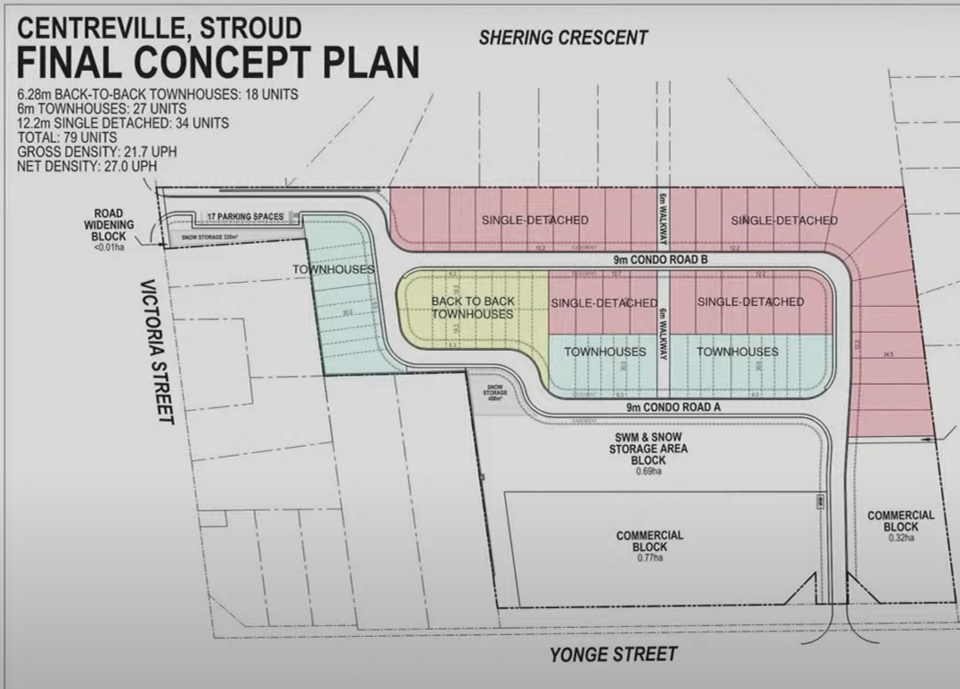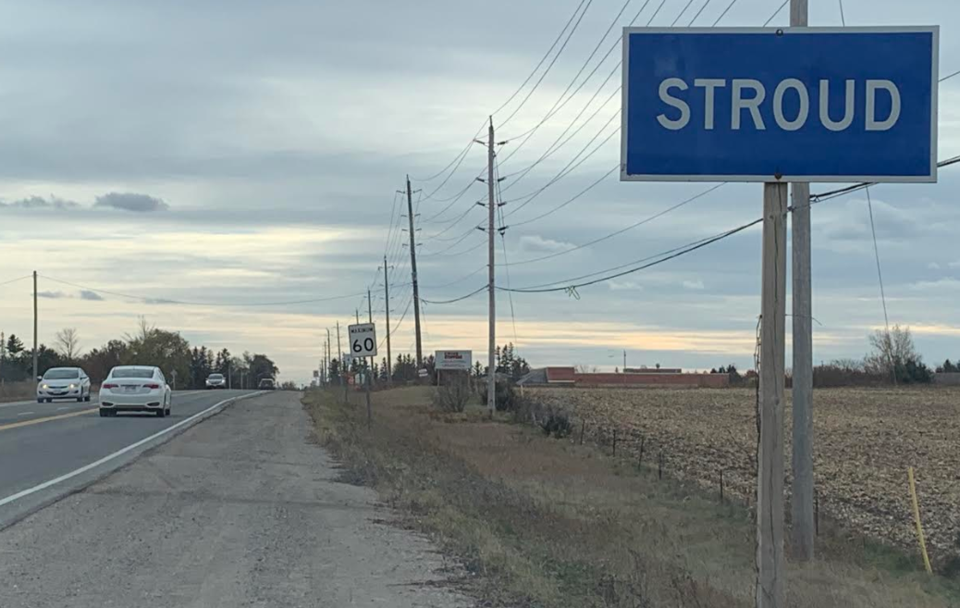A townhouse development proposal in Stroud that Innisfil council nearly outright denied received the green light to move forward.
Council approved the zoning-bylaw amendment request for 7958 Yonge St. at its Aug. 14 meeting.
The property consists of about five hectares near the Yonge and Victoria streets intersection in Stroud, with 216 metres of frontage onto Yonge. The proposal conforms to the town’s official plan (OP), calling for 27 units per hectare, with 33 single-detached units, 27 conventional townhouses and 18 back-to-back townhouses.
One of the biggest concerns from councillors was the lack of parkland space being proposed for a project with this density. There were some revisions made to allow for more amenity space — two snow-storage blocks will be open spaces during warmer months — but the town was somewhat hamstrung by its own policies, as well as those mandated by the province and County of Simcoe.
“What we wanted — from a staff perspective — council to understand is there are some limitations in terms of the (OP) designation on the property,” said planning and growth director Andria Leigh. “The application as proposed is at a density of 27. So, in order to incorporate additional parkland into the property, they would likely be below that density requirement and would not be in compliance and conformity with the (OP).”

As classified by the OP, a density between 25 units per hectare and 30 units per hectare is required for this property.
Issues with drainage, retaining walls and maximum height were highlighted at the previous council meeting and staff reviewed its work with the proponent at council’s request.
Two retaining walls are proposed for the development, adjacent to the visitor parking on Victoria and the southeast portion of the property. These are required, the staff report indicated, by the elevation requirements of the stormwater management pond and storm-sewer system along Yonge.
The site will be designed so that drainage will occur into the stormwater management and discharge toward Yonge, away from the existing residential properties. Those existing properties are a smaller density and height than the proposed units.
“The grading of the land along the western property limit separating the existing homes and the proposed residential lots is designed to be subtle, ensuring an appropriate transition from the existing grading on Shering Crescent to the proposed dwellings,” the staff report indicated. “The existing residential dwellings which abut the proposed development have generous rear yard setbacks which provide significant separation between the existing residential dwellings, and the proposed development.”
Staff also had no concerns with the increase in height.
“The proposed maximum building height is 1.5 metres taller than the existing zone maximum of nine metres, which would integrate with and maintain the community's low-rise character.”
Council heard from residents en masse at a November 2023 public meeting on the matter, with most, if not all, calling for it to be stopped. How it mixed with the existing neighbourhood was the chief concern and what Coun. Kevin Eisses was trying to bring to the forefront when the matter came before council in June.
Even as those issues were brought back to staff, town planners had to ensure documents such as the Provincial Policy Statement and county and town OPs — and the density directives within them — were adhered to and given more prominence in the decision-making process than the concerns of the neighbours.
“I know a lot of residents have voiced different things about this development, but the main issue as I see it is the density numbers that we don’t have any control over,” Eisses said.
It’s not a position the town wants to be in, but it’s better than the alternative, suggested Mayor Lynn Dollin.
“The expectation, I guess, from the residents of Stroud is that we can sit here and say no and the whole thing goes away, and it stays a field for another 20 years,” she said. “We can’t.”
Denying the application would not see the land go unused, but rather send the town to court, as the decision would certainly be appealed to the Ontario Land Tribunal. That body’s decision, which cannot be appealed, would remove the autonomy from the council and could ultimately increase the density allowed on the property.
“The residents of Stroud are going to see this as a cop-out,” Dollin said. “Really, I think it’s better the devil you know than the devil you don’t and have your own council have influence and your own staff have influence on what’s going to be there.”
Development of the property is not expected to begin until later in the decade.



